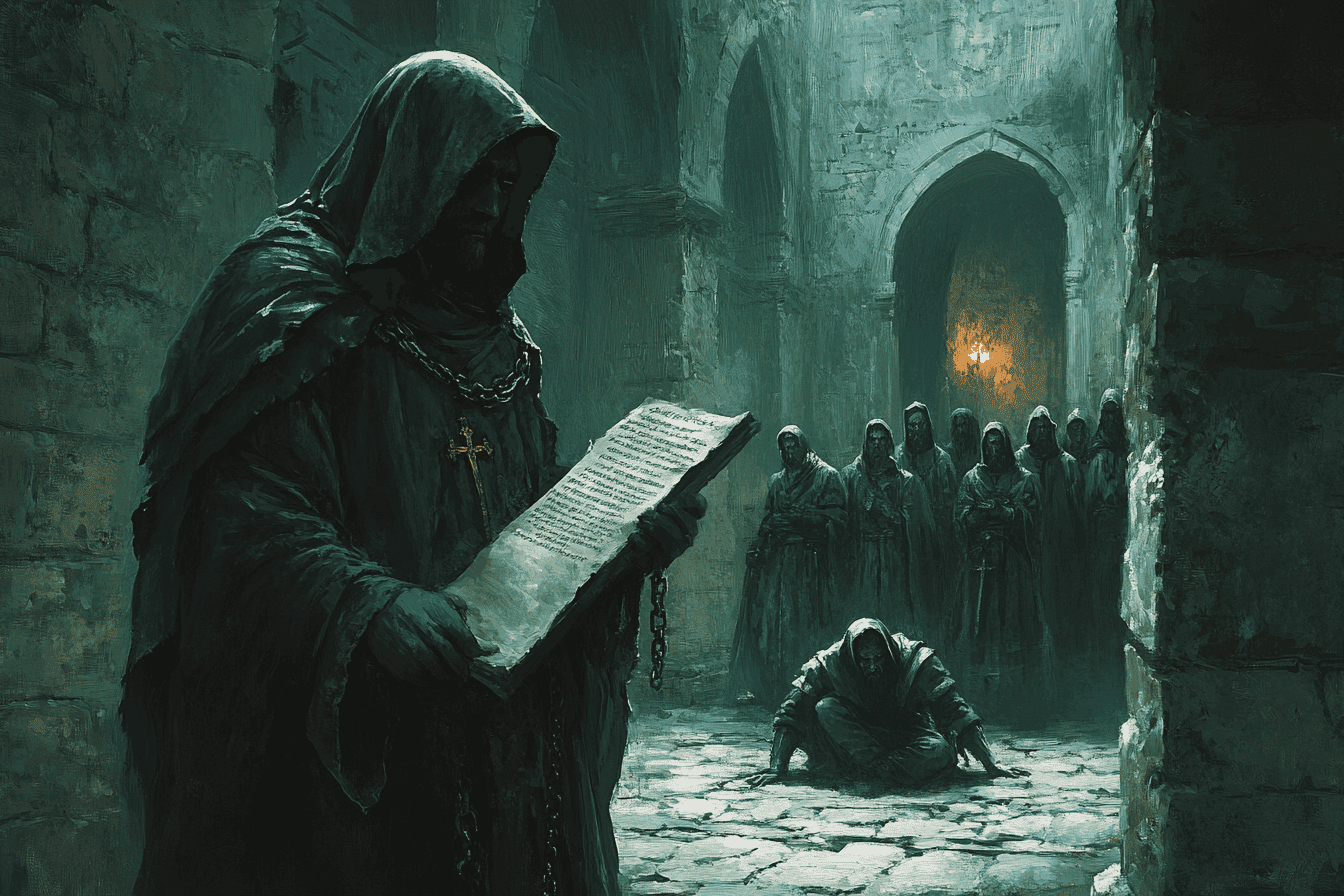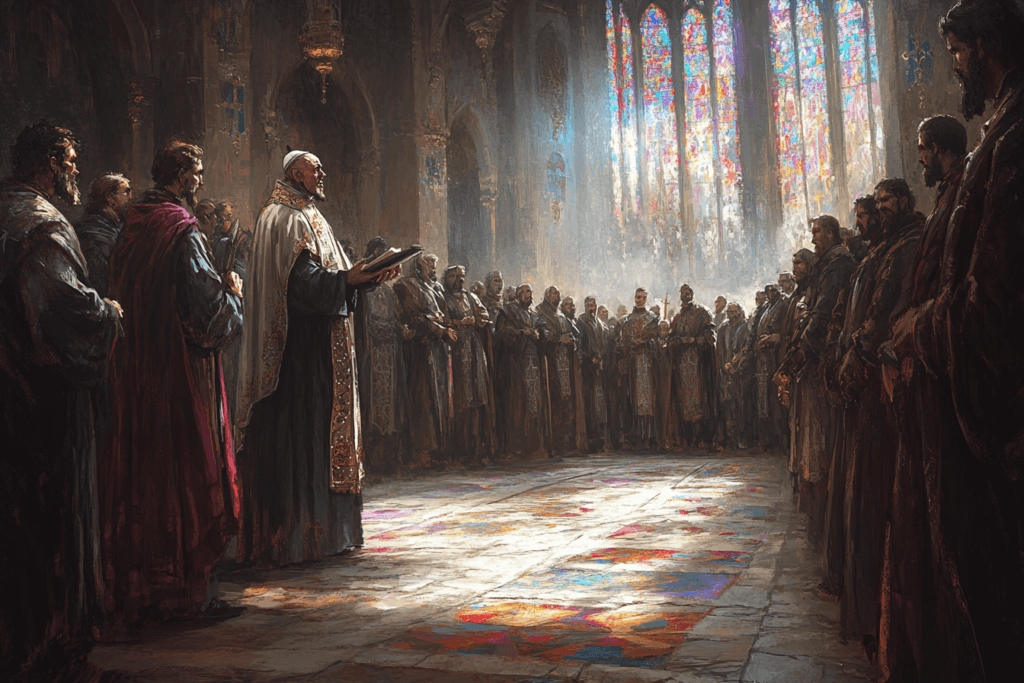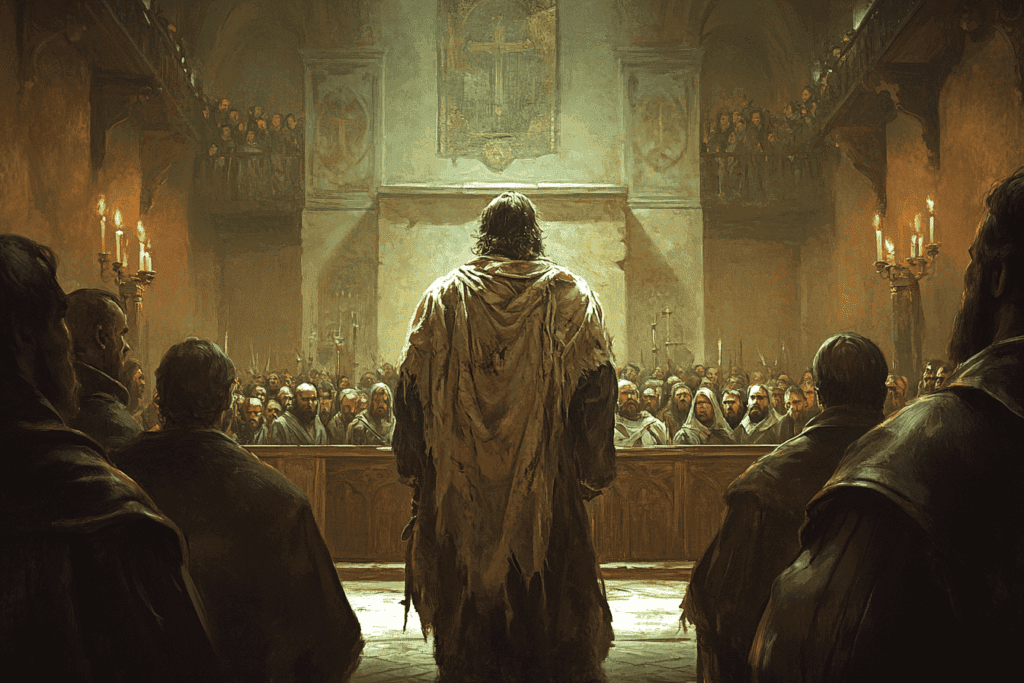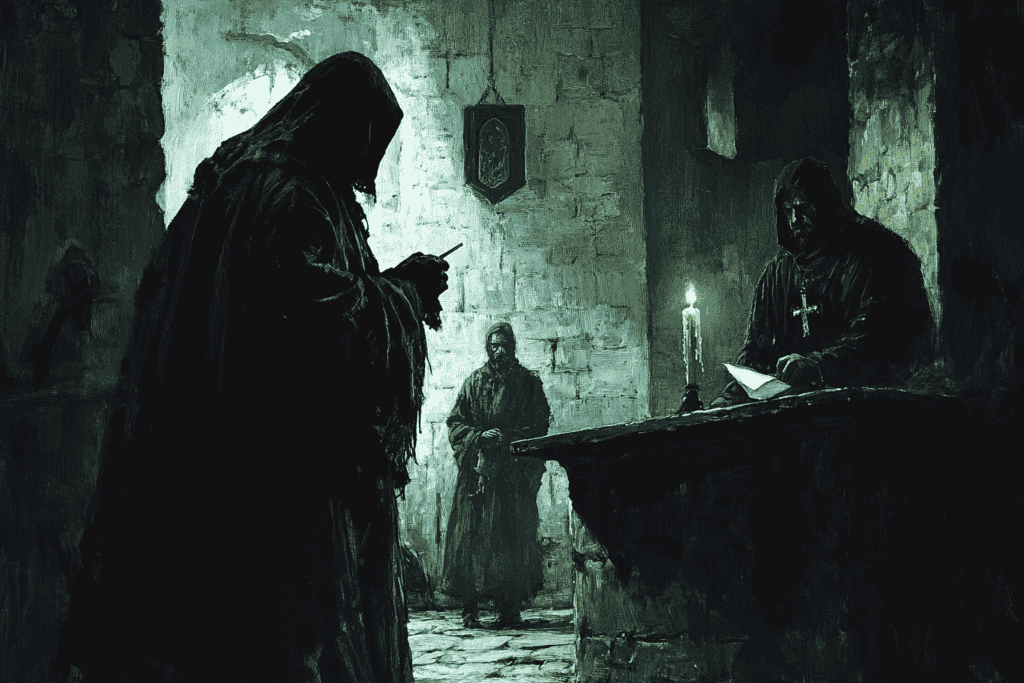
The Papal Inquisition, established in the 13th century, marked a significant turning point in the Catholic Church’s approach to combating heresy. This institution, which would later evolve into various forms of inquisitions, had far-reaching consequences for European society and religious practice.
Origins and Context
The roots of the Papal Inquisition can be traced back to the early 13th century, a time of significant religious and social upheaval in Europe. In 1184, Pope Lucius III laid the groundwork for what would become the Inquisition by issuing a papal bull titled “Ad abolendam,” which called for bishops to investigate and combat heresy within their dioceses. This initial effort, known as the Episcopal Inquisition, proved to be largely ineffective due to the limited reach of individual bishops and inconsistent implementation across different regions.
The need for a more centralized and systematic approach to dealing with heresy became increasingly apparent as various heterodox movements gained traction across Europe. Among these, the Cathars in southern France posed a particularly significant challenge to Catholic orthodoxy. The Cathars held beliefs that were fundamentally at odds with Catholic doctrine, including the notion that there were two gods – a good one governing the spiritual realm and an evil one ruling the physical world.
Establishment of the Papal Inquisition
In response to these challenges, Pope Gregory IX took a decisive step in 1231 by establishing the Papal Inquisition. This new institution represented a significant shift in the Church’s approach to heresy, centralizing authority and creating a more formalized and systematic process for identifying and dealing with heretics.
The Papal Inquisition differed from its predecessors in several key ways:
- Centralized Authority: Unlike the Episcopal Inquisition, which relied on local bishops, the Papal Inquisition was directly controlled by the papacy.
- Specialized Inquisitors: Pope Gregory IX appointed dedicated inquisitors, many of whom were drawn from the newly formed Dominican and Franciscan orders. These mendicant friars were well-suited to the task due to their mobility and theological training.
- Standardized Procedures: The Papal Inquisition developed a set of codified procedures for investigating and trying suspected heretics, ensuring a more consistent approach across different regions.
- Record-Keeping: Inquisitors were required to keep detailed records of their investigations and trials, providing valuable historical documentation.

Motivations and Justifications
From the Catholic Church’s perspective, the primary goal was to combat the spread of heretical ideas and maintain doctrinal purity. The Church viewed heresy not just as a theological error, but as a threat to the spiritual well-being of all Christians. By rooting out heretics, the Inquisition aimed to protect the faithful from corrupting influences.
Heresy was often seen as a threat to social and political stability. By aligning with secular authorities in the fight against heresy, the Church helped to maintain the existing social order.
Paradoxically, another motivation for the Inquisition was to bring greater order and legality to the process of dealing with heresy. Prior to the Inquisition, accused heretics were often subject to mob justice or trials by ill-equipped local authorities.
Inquisitorial Procedures
The Papal Inquisition developed a set of procedures for identifying, investigating, and trying suspected heretics. The process often began with accusations from members of the community. Inquisitors would arrive in a town and call for people to come forward with information about suspected heretics. Following these denunciations, inquisitors would conduct investigations, questioning witnesses and examining evidence.
Suspected heretics would be interrogated, often using psychological pressure and, if necessary, torture to extract confessions. Formal trials were conducted, during which the accused could defend themselves, though the odds were heavily stacked against them. Those found guilty of heresy could face a range of punishments, from penance and fines to imprisonment or, in extreme cases, execution.

Early Impact and Expansion
The impact of the Papal Inquisition was felt almost immediately across Europe. In its early years, the institution focused primarily on combating the Cathar heresy in southern France. The Inquisition’s methods proved effective in suppressing the Cathar movement, though at a significant human cost.
While the Papal Inquisition is often associated with actions and atrocities against the Cathars, it’s important to note that its early years also saw actions against other groups. One particularly disturbing incident occurred in the 1230s, shortly after Pope Gregory IX established the Inquisition in 1231.
In 1233, Pope Gregory IX issued the bull “Vox in Rama,” which effectively launched a crusade against alleged Satanists in Germany. This led to a series of brutal and indiscriminate persecutions led by three zealous inquisitors: Conrad of Marburg, Conrad Dorso, and a man known as “the One-eyed John.”
These inquisitors disregarded proper procedures and accused people at will, often stirring up mobs to pressure secular authorities into executing the accused. Their methods were so extreme that they caused widespread terror and chain reactions of denunciations, tearing apart families and communities.
The situation reached a breaking point when Conrad of Marburg accused Count Henry of Sayn of participating in Satanic orgies. This accusation against a powerful nobleman led to a dispute that ultimately resulted in Conrad’s assassination by a group of knights.
As the 13th century progressed, the scope of the Inquisition expanded. In 1252, Pope Innocent IV issued the bull “Ad extirpanda,” which authorized the use of torture in inquisitorial proceedings. This controversial decision would have far-reaching consequences for the future of the Inquisition.
The Papal Inquisition also spread geographically, establishing tribunals in various parts of Europe. However, its reach was not uniform, with some regions, particularly in northern Europe, remaining largely untouched by inquisitorial activity.
Criticisms and Controversies
From its inception, the Papal Inquisition was a source of controversy. Firstly, the authorization of torture as a means of extracting confessions was particularly controversial and remains one of the most criticized aspects of the Inquisition. Secondly, the secretive nature of inquisitorial proceedings, where accused were often unaware of the charges against them or the identity of their accusers, was clearly unjust.

There were many instances of inquisitors abusing their authority for personal gain or to settle personal vendettas. The Inquisition’s focus on orthodoxy had a chilling effect on intellectual and scientific inquiry, as innovative ideas could potentially be branded as heretical. It is unsurprising that after the medieval period it was Northern Europe, largely free from the Inquisition unlike the South, that lead the way in technological and cultural progress.
Legacy and Evolution
The establishment of the Papal Inquisition in the 13th century laid the groundwork for later inquisitions, including the infamous Spanish Inquisition established in 1478. While these later inquisitions operated under different authorities and with different specific goals, they drew heavily on the procedures and precedents established by the Papal Inquisition.
The legacy of the Inquisition continues to be debated by historians and theologians. Some argue that it must be understood in the context of its time, when heresy was seen as a grave threat to both spiritual and social order. Others emphasize the human rights abuses and the suppression of free thought that characterized the institution.
Conclusion
The Papal Inquisition’s legacy is complex and multifaceted. While it succeeded in its primary goal of suppressing heretical movements, it also left a dark stain on the history of the Catholic Church. The history of the Inquisition serves as a cautionary tale about the potential for institutions, even those with ostensibly noble goals, to become instruments of oppression when given unchecked power. The Inquisition, established in the Twelfth Century, was still operating 700 years later with little respect for individuals’ rights.
For example, in 1858 in Bologna, Inquisition agents kidnapped a 6-year-old Jewish boy named Edgardo Mortara from his family. The local inquisitor had learned that the boy had been secretly baptized by his nursemaid, and on this pretext, Pope Pius IX ordered the child to be taken and raised as a Catholic in Rome. Edgardo’s father, Momolo Mortara, spent years desperately seeking help from various quarters, including international appeals, to reclaim his son.
This incident exemplifies the Inquisition’s willingness to tear families apart and inflict profound psychological trauma in the name of religious orthodoxy. It occurred long after the peak of Inquisitorial power, demonstrating how the institution’s practices persisted well into the 19th century.





It sounds to me like they just legitimized hypocrisy